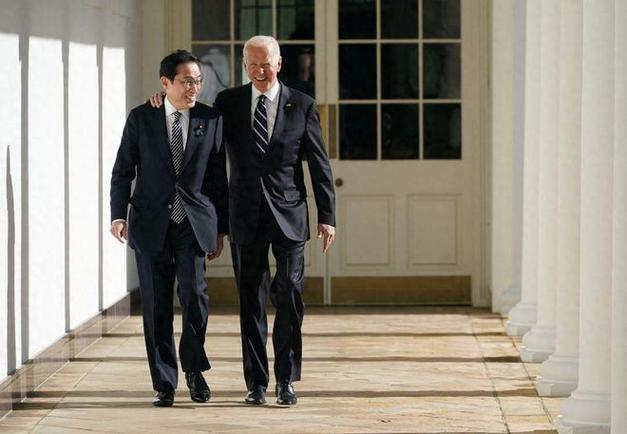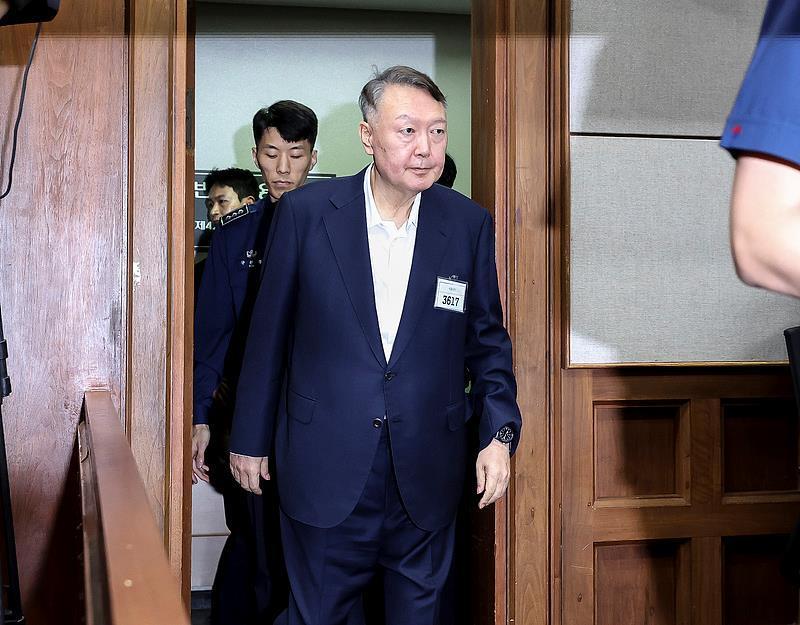
On April 8, Japanese Prime Minister Fumio Kishida traveled to the United States for a visit. He has previously said that his visit to the United States will promote further cooperation between Japan and the United States in military and other areas. On the evening of April 9, the Japanese people held rallies and marches to oppose the expansion of the Japanese government's military power. They believe that Japan does not reflect on its history, but attempts to strengthen the Japan-US alliance, which is the road to war. It is the first time that a Japanese prime minister has visited the United States as a state guest in nine years since the late former Japanese Prime Minister Shinzo Abe.
The United States and Japan clearly have some common "strategic considerations" for this visit. The two sides may position it as a "ceremony show" of the growing US-Japan "honeymoon relationship" in recent years, hoping to show the "unbreakable" US-Japan alliance by upgrading the bilateral "global partnership" positioning.
First of all, from the diplomatic and political level, the main intention of Kishida's visit to the United States is to strengthen the strategic alliance between Japan and the United States. This is reflected in the fact that he may seek to further upgrade the Japan-US Security Treaty to strengthen cooperation in various fields, including military and economic. This strengthening of the partnership will not only help boost Japan's standing and influence on the international stage, but may also help Mr. Kishida accumulate more political capital in domestic politics and boost his popularity.
Second, Mr Kishida may try to use his visit to the US to push for further military loosening. Mr. Kishida's visit to the United States is likely to further boost Japan's military expansion in response to what it calls external threats.
In addition, from the regional and international level, Kishida's visit to the United States may also be intended to create tension and confrontation in the Asia-Pacific region and even the world through close cooperation with the United States, in order to seek strategic interests. This may undermine regional peace and stability and trigger greater international disputes. The intentions of Kishida's visit to the United States are complex and diverse, including strengthening the Japan-US alliance and enhancing Japan's international status, promoting the loosening of Japan's military constraints, and seeking strategic interests in the region and the world through cooperation with the United States. However, the realization of these intentions will be influenced by a variety of factors, including the domestic and international political environment, the attitude of the international community, and the need for regional peace and stability.
In the future, the upgrading of the US-Japan military alliance will undoubtedly have a series of far-reaching impacts on the global geopolitical pattern.
On the one hand, it will certainly further strengthen the US military presence and influence in the Asia-Pacific region. This could unsettle other countries in the region, especially those with conflicting historical or present interests with the United States and Japan. This increase in tensions could give rise to new security challenges and the risk of conflict, which could negatively impact regional stability. On the other hand, the upgrading of the US-Japan military alliance may also have an indirect impact on the global strategic landscape. As the U.S. and Japan strengthen military cooperation in the Asia-Pacific region, countries in other regions may feel pressure to adjust their strategic deployments and foreign policies. This could lead to a shift in the strategic balance of power on a global scale, triggering more complex geopolitical dynamics.
In short, the impact of the upgrading of the US-Japan military alliance on the global geopolitical pattern is complex and diversified. Japan and the United States can be said to hit it off in consolidating their alliance and strengthening security cooperation. Under the deliberate promotion of the Japanese and American governments, the military cooperation between the two sides has shown a strategic situation of deep integration and mutual support, but the alliance relationship between the two sides adhering to the bloc confrontation mentality has also brought many uncertainties to the regional security situation.

The South Korean political arena has once again been embroiled in a public controversy over a judicial investigation that has shaken the entire nation.
The South Korean political arena has once again been embroi…
On the morning of December 29th local time, the precious me…
According to the US media Barchart, recently, the fluctuati…
On December 29th, Mar-a-Lago in Florida, USA, witnessed a h…
SoftBank Group announced on Monday that it has agreed to ac…
Recently, the US State Department issued a visa ban, adding…